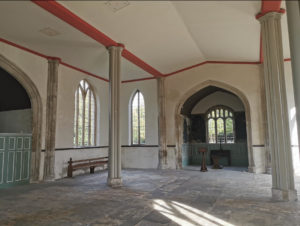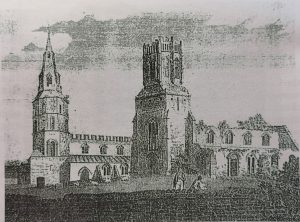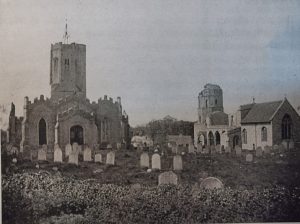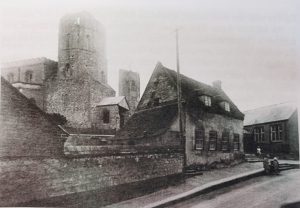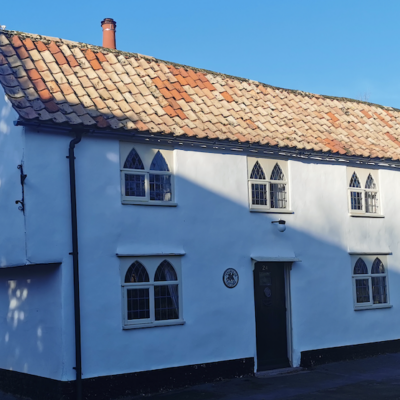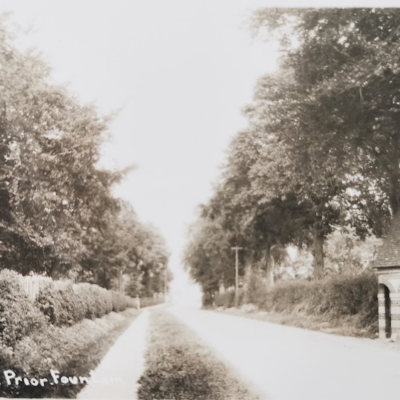Search by topic
- archaeology
- architecture
- bricklayer
- Building of Local Interest
- carpenter
- church
- crime
- dressmaker
- fire
- Great Eastern Railway
- listed building
- medieval
- oral history
- Public House
- Rattee & Kett
- Religious House
- Roman
- scholar
- school
- Then and Now
- tudor
- women
- work
- world war one
- world war two
Search by text
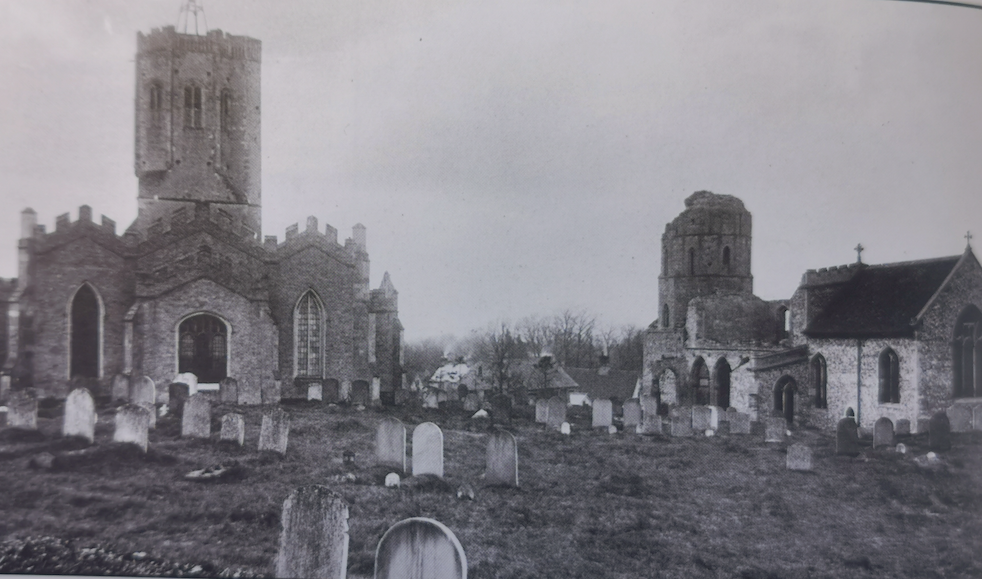 Swaffham prior churches, c. 1890. St Mary's on right. (Photo Scott and Wilkinson)(Cambridgeshire Collection)
Swaffham prior churches, c. 1890. St Mary's on right. (Photo Scott and Wilkinson)(Cambridgeshire Collection)St Cyriac and St Julitta’s church, Swaffham Prior
History of St Cyriac and Julitta
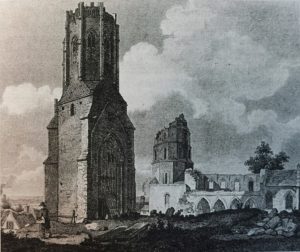
Two churches in 1806: St Mary’s damaged by demolition of spire; St Cyriac’s demolished except for tower
Listed Building
Former parish church of C15 West tower, with early C19 nave, chancel, transepts. Except for the C15 West tower, the whole of the church was rebuilt c1805 to a design by Charles Humfrey of Cambridge. The church is now in the care of The Churches Conservation Trust.
‘Swaffham – Two Churches’, 2016, suggests that the dedication to St Cyricac and Julitta may date from the time of the Norman Conquest. The situation of the this church on higher and more central ground suggests an earlier foundation. However, the two churches seem to have served separate parishes withon the township. In the 13th century St Mary’s rectory was granted to Anglesey Abbey. The rectory of St Cyriac’s was granted to the Bishop of Ely .
At the Dissolution St Mary’s parish reverted to the Bishop while St Cyriac’s went to the Dean and Chapter of Ely Cathedral.
In 1667 an Act of Parliament was passed which said that both ‘vicaridges’ were to be united under one priest. Martin Hill was appointed the first vicar of Swaffham St Cyriac cum St Mary.
Hill’s successor was John Peter Allix, son of a prominent French protestant who fled England in 1685.
In August 1744 William Cole reported that the interior of both nave and chancel had been refitted in the previous year.
William Collier, the next vicar, had married Dean Allix’s daughter. Collier appears to have allowed the fabric of St Cyriac’s to deteriorate and de factor create a single parish church. In 1783 it was reported to be delapidated. Then one July Sunday in 1779 during the service in St Mary “lightening fell upon the spire … a ball of fire descended into the body of the church and burst in the middle aile with a most violent explosion”. This was taken as a bad omen and the congregation wanted to demolish the spire.
In 1802 it was decided to demolish the spire of St Mary’s at a cost of £25. This was a disaster because the roof of the nave and the porch had been damaged in the process. Instead of having to tackle the mess they had made however the parishioners were able simply to turn to their other church, even though by now this was also in disrepair.
With one medieval building unusable they decided to pull down the pother and rebuild. A parochial rate of twenty-two shillings in the pound was then imposed for the erection of the new building. A later commentary in the Church Monthly of 1901 records that “many of the parishioners were so exasperated at this heavy tax upon their purses that they left the worship of the Church.”
Contribute
Do you have any information about the people or places in this article? If so, then please let us know using the Contact page or by emailing capturingcambridge@
License
This work is licensed under CC BY-NC-SA 4.0








